Table of Content
- What are Smart Locks?
- Types of Smart Locks
- Electronic Locks–e-locks–Smart Locks 101
- Basic Hardware Design Documentation
- Selecting the Right Wireless Protocols
- Choosing the Right Chip for Your Smart Lock
- Smart Lock Security and Privacy
- The Matter Smart Home Ecosystem
- Silicon Labs Smart Lock SoC’s
- Smart Lock Use Case
- IoT Consulting Services
As Smart Home IoT technology becomes mainstream, opportunities for developing innovative products are rapidly emerging. Smart locks are a growing category with significant innovation potential, with the global smart lock market expected to grow at a CAGR of 19.6% from 2023 to 2030.
The introduction of the Matter protocol has enhanced IoT devices with plug-and-play capabilities, enabling seamless connectivity with major smart home ecosystems, including HomeKit, Google Assistant, Alexa, and others. This evolution has made integrating smart locks into smart home systems easier, leading to trends like voice assistant control, remote access, camera integration, and advanced locking/unlocking mechanisms.
With flexible designs and the increasing adoption of home automation, smart locks have become a leading component of the connected home experience. Additionally, smart locks are becoming widespread in commercial applications such as the hospitality industry, commercial buildings, manufacturing facilities, smart cities, and lockbox facilities, making them a booming market in various sectors.
This article will explore the basics of smart locks, key concepts, and design factors for developing smart lock technologies.
What are Smart Locks?
Smart locks are electronic door locks that combine components (circuitry) and a latching mechanism to provide secure access control solutions. Their main components are the microcontroller unit (MCU), motor driver, wireless communication module, battery power management, sensors, and user interface components like keypads or biometric sensors.
Smart Locks are typically battery-powered IoT devices or embedded devices that require ultra-low power capabilities and use wireless protocols such as Bluetooth LE, Zigbee, Thread, Wi-Fi, and Z-Wave.
Beyond the electronics, smart locks ship in several mechanical form factors. These shapes drive key engineering choices—from torque and power budgets to wireless integration.
Types of Smart Locks
Smart locks come in various form factors designed for different applications and levels of security. Understanding these categories helps guide both hardware and firmware design decisions, as each type presents unique mechanical, power, and integration requirements.
Deadbolt
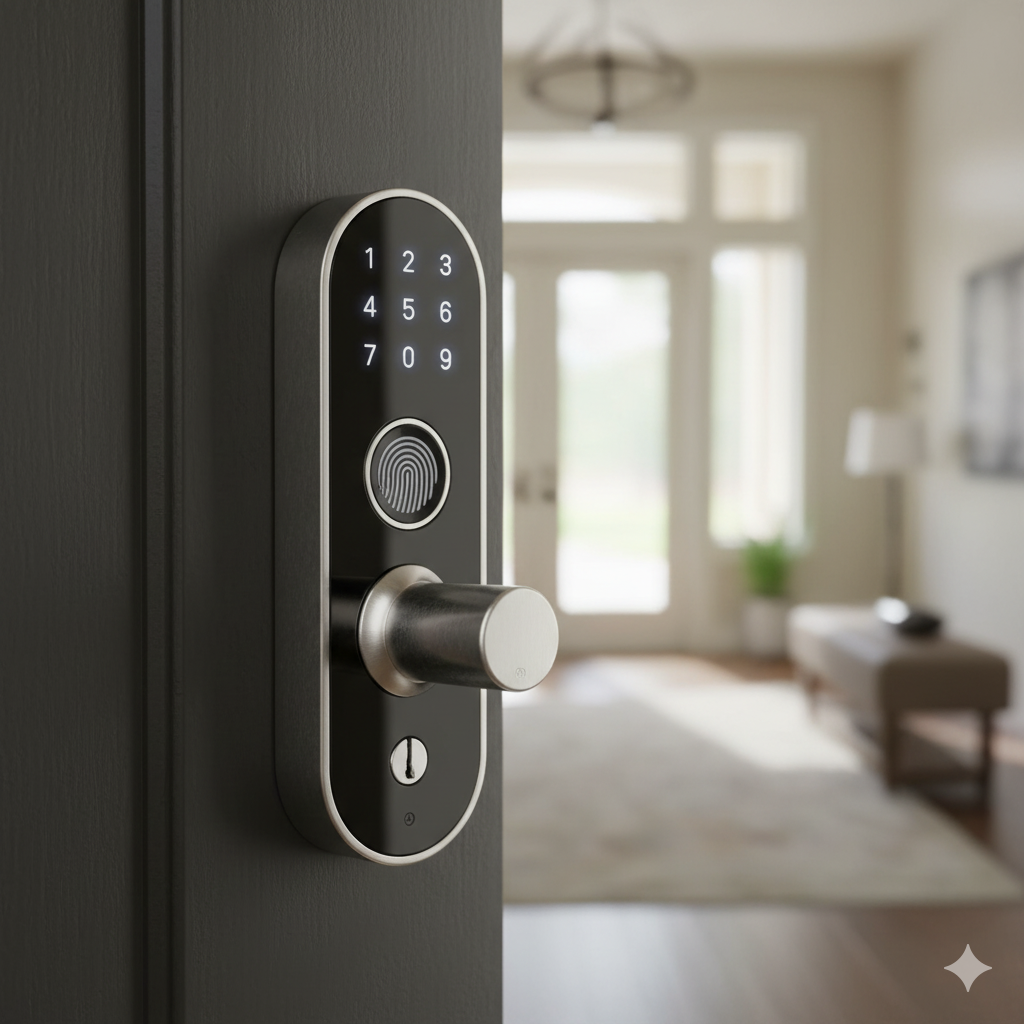
A smart deadbolt is the most common residential form factor. It replaces or upgrades the traditional mechanical deadbolt and is typically motor-driven for locking and unlocking. Smart deadbolts provide high security and integrate with mobile apps, keypads, or biometrics for keyless entry. They are ideal for exterior doors requiring strong mechanical resistance.
Lever Handles
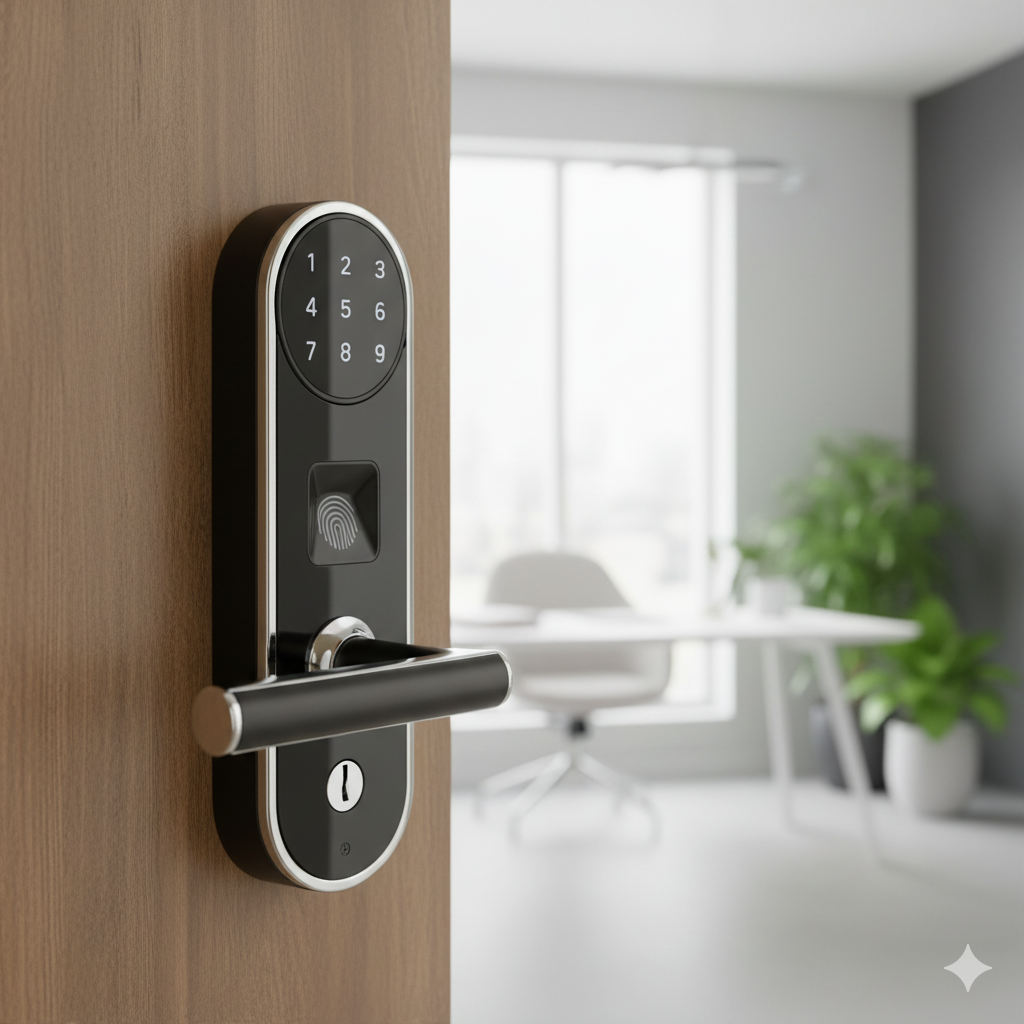
Smart lever handle locks combine the handle and locking mechanism in a single unit. Often used for interior doors—such as offices, bedrooms, or commercial spaces—they provide convenience and easy access. Many include fingerprint sensors or keypads for authentication while maintaining a low-power design suitable for frequent use.
Padlocks
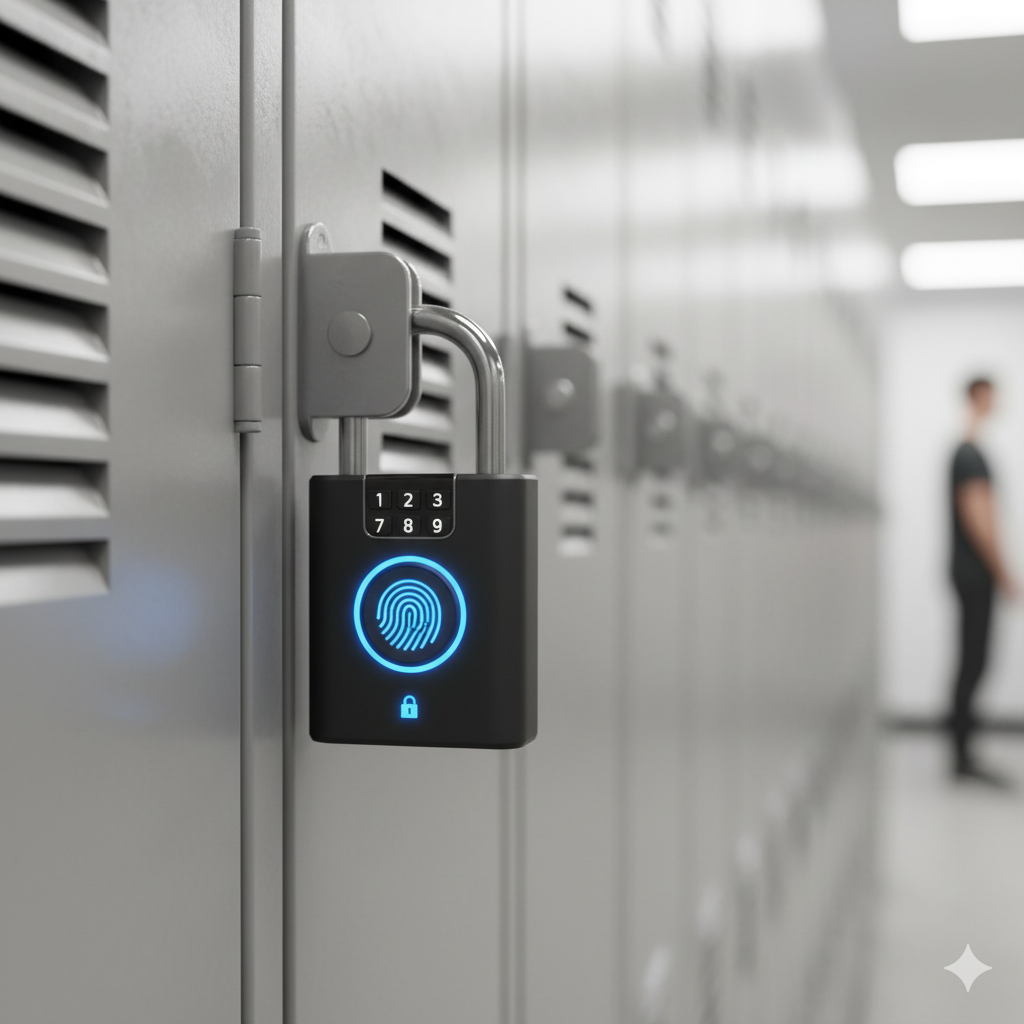
Smart padlocks are portable and versatile, designed for gates, lockers, or storage units. Instead of keys, they use digital authentication methods such as mobile apps, PIN codes, or biometrics. Because they rely on compact battery designs, efficient power management and waterproofing are critical to their performance.
Knob Locks
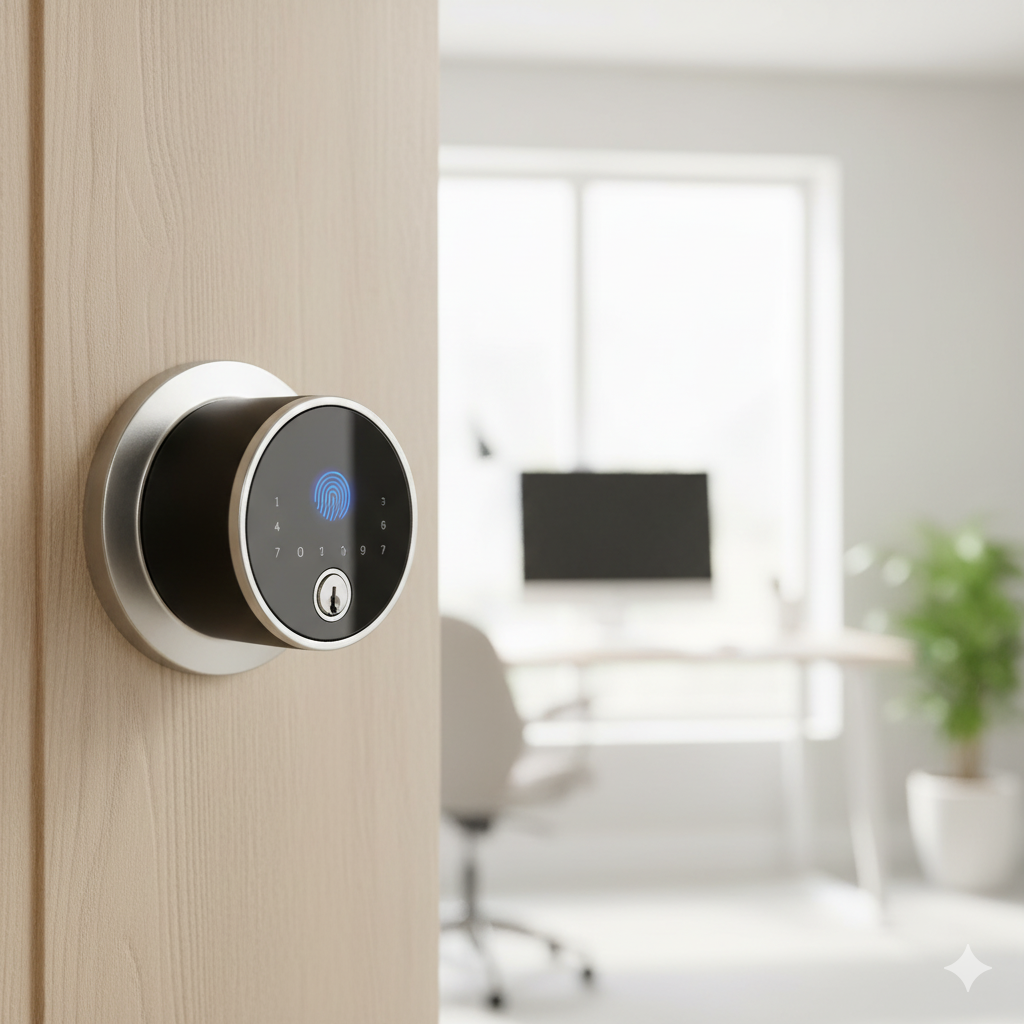
Smart knob locks integrate the locking mechanism into a round knob rather than a lever. They are commonly used on both interior and exterior doors, offering an electronic lock/unlock interface that can be paired with mobile apps, passcodes, or NFC access. Many support retrofit installations to upgrade existing hardware easily.
Server Cabinet Locks and Latches

In enterprise or industrial settings, smart locks can secure equipment enclosures such as server racks, cabinets, and control panels. These physical locks are designed for high reliability, real-time monitoring, and remote credential management used in IT or industrial environments.
Other Categories
- Biometric Locks: Use fingerprint, facial, or palm vein recognition for high-assurance access control
- Retrofit Locks: Attach to the inside of an existing deadbolt, adding smart features without replacing external hardware. Ideal for retrofitting older doors into connected systems
- Commercial and Hospitality Locks: Designed for multi-user environments with centralized credential management and OTA provisioning.
Electronic Locks–e-locks–Smart Locks 101
In the following subsections, we will discuss some of the basics of smart locks to illustrate our readers’ exploration of digital transformation initiatives.
Smart Lock Requirements
- Low power requirement (battery-powered)
- Throughput requirements (Low for daily needs, high firmware upgrading)
- Security requirements (SSL/TLS, WPA2/WPA3)
- Cloud Connectivity–remote control
- Bluetooth Low Energy integration for provisioning to Wi-Fi network
Smart Lock Systems-Main Devices
MCU (Microcontroller Unit): A compact, integrated circuit that contains a processor, memory, and input/output peripherals used to control the functions of embedded systems like smart locks. It acts as the brain of the device, executing software to manage operations such as locking mechanisms and wireless communication. Modern MCUs often have built-in wireless capabilities, integrating the functions of a separate wireless module.
Wireless Communication Module: This component handles all wireless connectivity for the smart lock. It is crucial for enabling smart features and often supports multiple communication standards, each with a distinct role:
Bluetooth Low Energy (BLE): Primarily used for energy-efficient, short-range communication. Its main functions are to connect with a smartphone for initial setup (a process called provisioning), direct control when the user is nearby, and configuration.
Wi-Fi: Enables a direct connection to the cloud through a local router. This is what allows for remote control (locking or unlocking from anywhere), status notifications, and integration with other cloud-based smart home systems and voice assistants.
Other Protocols (e.g., Zigbee, Thread): Some locks use these low-power mesh protocols to connect to a central smart home hub rather than directly to Wi-Fi, which can improve battery life and reliability within a larger home automation system.
Motor Driver: An electronic component that controls the operation of a motor, such as in a smart lock’s locking and unlocking mechanism. It regulates the power delivered to the motor, determining its speed, direction, and torque.
Power Management: A system function that optimizes energy use within a device to extend battery life. In smart locks, power management involves regulating how much power each component consumes, especially during idle periods, to ensure long-lasting, reliable operation on battery power.
Locking Mechanism: The physical component that secures the door, such as a deadbolt or latch.
Sensors: Various sensors might be used, such as door position sensors, tamper detection sensors, or biometric sensors (e.g., fingerprint readers).
User Interface: Many smart locks have some form of local interface, such as a keypad or touch panel, for manual operation without a smartphone.
Backup Key Cylinder: Most smart locks include a traditional key cylinder as a backup in case of electronic failure or a dead battery.
Security Chip: Some advanced smart locks include dedicated security chips for enhanced encryption and protection against hacking attempts.
Smart Lock Authentication Methods
As smart home technology evolves, smart locks incorporate multiple authentication methods to enhance security and convenience. Modern smart locks can have various input options that offer flexibility for users and use cases.
From traditional keypad entry to advanced biometric methods like facial recognition and fingerprint identification, each option serves unique needs in ensuring secure access control.
Additionally, smart locks now offer the possibility to implement dual or multi-authentication mechanisms, combining multiple methods for enhanced security. This section explores the key authentication methods available for smart locks:
- PIN Codes: Users enter a Personal Identification Number (PIN) on a keypad to unlock a smart lock. The correct sequence must match a pre-stored code in the lock’s system, granting access.
- Security Tokens: Physical or digital tokens (e.g., key fobs or smartphone apps) generate a secure, time-sensitive code or key. The token authenticates the user when presented to the smart lock, allowing access.
- Biometrics: Biometrics use unique physical characteristics for authentication. Smart locks capture and analyze these traits to verify identity.
- Fingerprint: The lock scans and stores unique patterns of a person’s fingerprint. It compares the scanned fingerprint to stored data for access control.
- Hand Geometry: Measures the shape and size of the hand. The system verifies the user by comparing hand geometry against stored profiles.
- Face Recognition: Uses cameras and algorithms to map facial features and compare them to a registered profile. This process often relies on statistical analysis algorithms, such as the Eigenface method, to ensure accuracy.
- Voice Recognition: This system analyzes vocal patterns and characteristics. The lock compares voice commands to stored profiles to verify identity.
- Eye Scan: Scans the iris or retina, which have unique patterns. The system matches the eye scan to pre-registered data for authentication.
Proximity-Based Access Control
Modern smart locks increasingly rely on proximity-based access control methods to enhance convenience and user experience. These methods allow the lock to detect an authorized device and automatically unlock when the user is nearby, eliminating the need for manual input.
- Bluetooth Low Energy (BLE) Proximity: The lock detects a paired device, such as a smartphone, when it comes within range (usually within a few meters) using Bluetooth Low Energy. Once in range, the lock communicates with the phone and automatically unlocks if the phone’s credentials are authenticated.
- NFC (Near Field Communication): Some smart locks use NFC to detect an NFC-enabled device (e.g., a phone or key fob) when brought close to the lock. Once proximity is confirmed, the lock can automatically unlock.
- Geofencing: Use phone location (GPS/Wi-Fi) to define a home area. When the user enters this area, the system can wake from idle (pre-warm radios, sync), but should not unlock the door. Final unlock should rely on short-range proof-of-presence (e.g., BLE/NFC/UWB).
Basic Hardware Design Documentation
When discussing electronic lock design with developers, it is important to understand the following documents:
What is the PCB Layout?
A well-designed PCB layout is a critical part of the design process that physically arranges electronic components on a board. This layout is fundamental to a smart lock’s functionality, reliability, and efficiency, as it translates the circuit design into a manufacturable product.
A good layout is essential to ensure proper placement and routing to prevent noise and signal interference, which is crucial for the reliable operation of communication modules and sensors. It also contributes effective power distribution to extend battery life and considers size constraints to ensure the accessibility of buttons and sensors.
Gerber files are a standard file format used in electronics manufacturing to describe the printed circuit board (PCB) layout, including the placement of components, traces, vias, pads, and other details necessary for production.
Open Data Base (ODB)++ files are a modern alternative to Gerber files that consolidate all PCB design data into a single, intelligent database. This all-in-one format includes information on layers, drilling, component placement, and material stack-up, streamlining communication with manufacturers.
A Bill of Materials (BOM) is a comprehensive list in a spreadsheet or text file with all the parts, components, assemblies, and materials required to manufacture a product. It typically includes detailed information such as part numbers, quantities, descriptions, and specifications for each component used in the product’s design.
When designing a smart lock, it is essential to balance cost-efficiency (using a low-cost BOM) with the need for reliable performance and battery longevity–crucial for maintaining affordability and quality in a competitive market.
For example, in the context of electronics or smart locks, a BOM would include:
- Electronic components (e.g., microcontroller, motor driver, sensors)
- Mechanical parts (e.g., latches, casing)
- Software components (e.g., firmware, licenses)
- Miscellaneous materials (e.g., screws, adhesives)
The BOM ensures that all necessary items are available during production and helps in cost estimation, inventory management, and procurement.
Selecting the Right Wireless Protocols
Choosing the right wireless protocol is critical in the design of smart locks, as it directly impacts power consumption, range, and connectivity reliability. Protocols like Zigbee, Z-wave, Bluetooth Low Energy (LE), and Thread are often preferred for their low power consumption and ability to maintain long-term device operation on a single battery. Each protocol offers different advantages depending on the use case:
- Bluetooth LE is ideal for short-range applications where low power usage is key, such as provisioning or direct smartphone communication.
- Zigbee and Thread excel in mesh network setups, enabling extended range and multiple devices to communicate efficiently, making them well-suited for smart home applications.
- Wi-Fi is a more power-hungry option than protocols like Zigbee or Bluetooth LE. While Wi-Fi offers greater bandwidth and range, it typically requires more energy, making it less ideal for long-term battery-powered IoT devices. However, Wi-Fi is still a valid option when constant connectivity and higher data throughput are required, as seen in certain smart home applications.
- Z-Wave operates on a low-power mesh network, allowing devices to communicate over long distances by relaying signals through other devices. It’s highly interoperable, supporting seamless integration across different manufacturers’ smart home devices, and its low power consumption makes it ideal for battery-operated devices like smart locks and sensors.
When selecting a protocol, developers must balance the device’s battery life requirements, data throughput needs, and network size to ensure optimal product lifecycle performance.
The protocol choice should align with the overall design goals, including form factor and cost considerations, as each has unique impacts on the Bill of Materials (BOM) and power management strategy.
Choosing the Right Chip for Your Smart Lock
When designing a smart lock, selecting the appropriate chip is crucial for optimizing performance, cost, and development efficiency. The right choice can significantly impact your product’s success by reducing development costs, accelerating time-to-market, and increasing overall return on investment (ROI). Here are key factors to consider when selecting a chip for your smart lock:
Power Management and Battery Life
For a battery-powered device like a smart lock, energy efficiency is a top priority. Achieving a multi-year battery life requires a two-pronged approach: selecting the right hardware and implementing intelligent firmware.
Hardware: Chip-Level Power Management
The foundation of an energy-efficient smart lock is the chip itself. Your selection should prioritize microcontrollers (MCUs) with built-in, ultra-low-power capabilities.
Low-Power Modes: Look for chips that offer various low-power or sleep modes. The ability of the hardware to quickly enter and exit a deep sleep state, where it consumes microamps of current, is essential for preserving the battery during idle periods.
Protocol Efficiency: Choose a chip optimized for low-energy wireless protocols. For instance, chips designed specifically for Bluetooth LE or Zigbee inherently consume less power during wireless transmission compared to more power-hungry options like traditional Wi-Fi. For Wi-Fi-enabled locks, the chip must effectively balance the need for constant connectivity with advanced power-saving features.
Firmware: Power Consumption Optimization
Even the most efficient hardware can be drained quickly by poorly designed firmware. The developer’s role is to write software that intelligently manages the device’s power consumption.
Strategic Sleep Cycles: Developers must write firmware that aggressively utilizes the chip’s low-power modes. The lock should remain in its deepest sleep state for as long as possible, waking only when necessary to perform a task (e.g., receive a command, check status).
Efficient Protocol Handling: Firmware should optimize how wireless protocols are used. For example, when using Zigbee or Thread, the firmware can fine-tune communication intervals and data packet sizes to minimize “on-air” time. By reducing the frequency and duration of power-intensive operations, developers can dramatically extend battery life, allowing the lock to function for years without battery replacements.
Wireless vs. Wired: The decision between wireless and wired chips depends on the use case, mostly for certain commercial or industrial settings. For example, Matter-over-Thread and Z-Wave protocols are wireless and enable smart locks to integrate seamlessly into existing home automation systems. However, a wired chip might reduce costs and simplify the design if the lock does not require remote access. Wireless solutions provide added flexibility and scalability but have higher development and power management complexity.
Cost vs. Volume Considerations The cost of the chip is a significant factor, especially when considering the production volume. Choosing a low-cost chip might make sense for high-volume deployments, but this approach often requires a higher investment in software development. Conversely, for low-volume projects, selecting a chip from a vendor that offers robust software support may be more cost-effective, reducing the time and resources needed for development.
Software Support and SDK Quality Software support from the manufacturer is critical, especially for smaller projects. Selecting a vendor with a robust software development kit (SDK) can significantly reduce development costs. A high-quality SDK provides the tools and documentation necessary to integrate the chip efficiently into the smart lock design, making it easier for developers to focus on product-specific features. Vendors like Silicon Labs offer extensive software support for their wireless IoT chips, which can be crucial for ensuring smooth deployment
Connectivity Protocol Version It is crucial to assess the functionality and scalability of each protocol version to ensure it meets the product’s needs without adding unnecessary complexity. For instance, BLE 4 is often chosen for its balance between quality and cost, while BLE 5 is preferred for its technological advancements, offering improved efficiency, control, and overall performance.
Smart Lock Security and Privacy
For a device whose primary function is security, a smart lock’s digital defenses are as critical as its physical ones. A comprehensive security strategy must protect against unauthorized access and ensure user privacy by safeguarding data at every point of its journey.
End-to-End Data Protection
Protecting data is fundamental. All communication—between the lock, the user’s smartphone, and cloud servers—must be secured. This is achieved using robust encryption and secure communication protocols. Key standards include:
- SSL/TLS: For securing data transmitted between the lock and the cloud, preventing eavesdropping and data tampering over the internet.
- WPA2/WPA3: For protecting the local Wi-Fi network that the lock connects to, preventing unauthorized local access.
The Security vs. Power Consumption Challenge
A major engineering challenge for battery-powered smart locks is balancing robust security with low power consumption. Strong encryption algorithms can be computationally intensive, leading to higher battery drain. Therefore, development must focus on selecting energy-efficient security hardware and optimizing the implementation of these cryptographic functions in the firmware. The goal is to safeguard data without significantly shortening the device’s battery life.
The Matter Smart Home Ecosystem
When discussing smart locks, it’s important to focus on the Matter-over-Thread protocol (Matter next-gen protocol), which provides a secure and interoperable connection for smart locks within the broader smart home ecosystem.
Building Matter smart home devices is an emerging trend that simplifies device integration, increases security, and future-proofs smart lock designs.
Matter-over-Thread achieves an ideal balance of performance and power savings for smart locks. By operating on a low-power mesh network, it allows developers to ensure robust, reliable connectivity while simultaneously conserving significant battery life. This efficiency is especially critical during long periods of inactivity, as the protocol allows the lock to enter a deep sleep mode without losing its connection to the smart home ecosystem.
Silicon Labs Smart Lock SoC’s
- Silicon Labs EFR32 Wireless Gecko SoC (System on Chip). The EFR32 Wireless Gecko series from Silicon Labs is a versatile family of wireless microcontrollers (MCUs) designed to support many IoT applications. These MCUs provide seamless integration with multiple wireless protocols, including Bluetooth, Zigbee, Thread, and Z-Wave, making them ideal for smart home products such as smart locks, lighting, and sensors. With a strong focus on power efficiency, the EFR32 series ensures extended battery life, even in devices that require constant connectivity, without compromising performance.
In addition to multiprotocol capabilities, the EFR32 Wireless Gecko MCUs feature advanced security measures to protect IoT devices from cyber threats. Built-in encryption, secure boot features, and over-the-air (OTA) firmware updates ensure that devices remain secure throughout their lifecycle. This combination of low-power consumption, robust security, and multiprotocol flexibility makes the EFR32 series a top choice for developers looking to build innovative, reliable IoT solutions. - EFR32MG21 is a Series 2 multiprotocol wireless SoC designed for smart locks, sensors, and home automation devices. It supports multiple wireless protocols, including Zigbee, Bluetooth Low Energy (LE), and Thread, allowing seamless integration into diverse smart home ecosystems. Known for its low power consumption and robust security features, the EFR32MG21 ensures reliable wireless communication while maximizing battery life in power-sensitive applications. Its advanced security includes hardware encryption, secure boot, and over-the-air (OTA) firmware updates, making it a secure and efficient choice for IoT developers.
- EFR32MG24 Series 2 Multiprotocol Wireless SoC. The EFR32MG24 SoC supports multiple wireless protocols, such as Zigbee, Bluetooth, and Thread, making it ideal for smart locks and other IoT applications. The SoC provides advanced features like low power consumption, robust security, and seamless integration with various smart home ecosystems. The SoC’s multiprotocol capabilities allow it to switch between or simultaneously support different wireless communication standards, offering flexibility and scalability for IoT devices, including smart locks.
- RS9116 Wi-Fi Transceiver Modules. The RS9116 Wi-Fi Module provides low-power consumption and Wi-Fi connectivity. It allows for remote control via mobile apps, enabling users to manage access to their homes from any location. In addition to its connectivity features, the RS9116 provides enhanced security through secure boot and encryption mechanisms, ensuring that the smart lock is protected from cyber threats. This low-power Wi-Fi and robust security combination makes the RS9116 ideal for innovative smart lock solutions.
- SiWx917 The SiWx917 is a single-chip Wi-Fi 6 and Bluetooth Low Energy (LE) 5.4 wireless secure MCU from Silicon Labs. It is designed for ultra-low-power IoT wireless devices that require secure cloud connectivity. It is ideal for battery-operated applications, such as smart locks, smart home devices, and industrial IoT, where long battery life is crucial.
Key features include a dual-core design with an ARM Cortex-M4 processor for application processing and a network wireless processor (NWP) for wireless communication. The SiWx917 supports Wi-Fi 6, Bluetooth LE 5.4, and Matter protocols, providing robust connectivity options. It offers advanced security features, including hardware encryption, a secure boot, and over-the-air (OTA) firmware updates. This SoC is energy-efficient and integrates peripherals like an ultra-low-power sensor hub and matrix-vector processor, making it a powerful, versatile solution for modern IoT applications.
Smart Lock Use Case
At Krasamo, we integrated a Silicon Labs–based microcontroller for a low-power keypad/light module that interfaces with a main MCU handling IoT connectivity and lock logic. The keypad originally used an always-on polling loop; we replaced this with hardware interrupts and shifted the inter-MCU link (a proprietary binary protocol) to an event-driven model. This reduced idle current enough to make the design viable on battery power. We also added an OTA update mechanism so the keypad’s Silicon Labs MCU can be updated by the master MCU over the same protocol.
Smart Lock Design and Development
Krasamo is an IoT development company specializing in electronic product design for smart homes, building automation, and Industrial IoT.
Our engineers have experience in PCB layout, Gerber, and ODB++ files, as well as manufacturing processes and testing. Our expertise also includes firmware development, embedded applications, and wireless connectivity.
We have experience developing smart home products such as locks, HVAC, sensors, toys, and building automation. We strive to create products that are easy to use, reliable, and secure.
IoT Consulting Services
- IoT Development
- Cloud and IoT Platform Integration
- Industrial IoT (IIoT)
- Embedded Development/Firmware development
- Build Matter Smart Home Devices
- Develop Mesh Networks

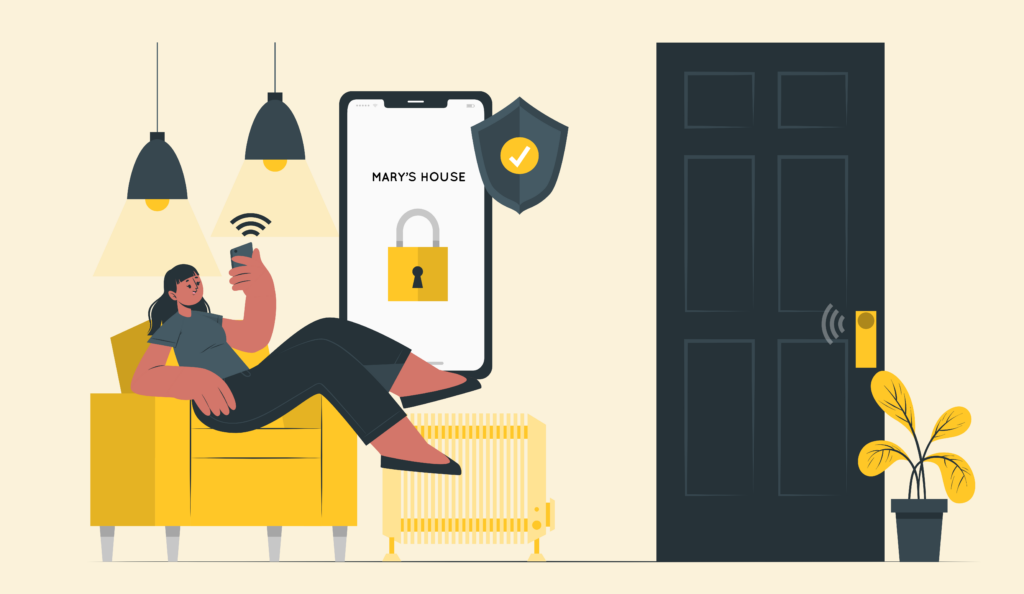








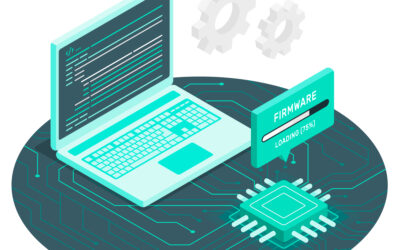
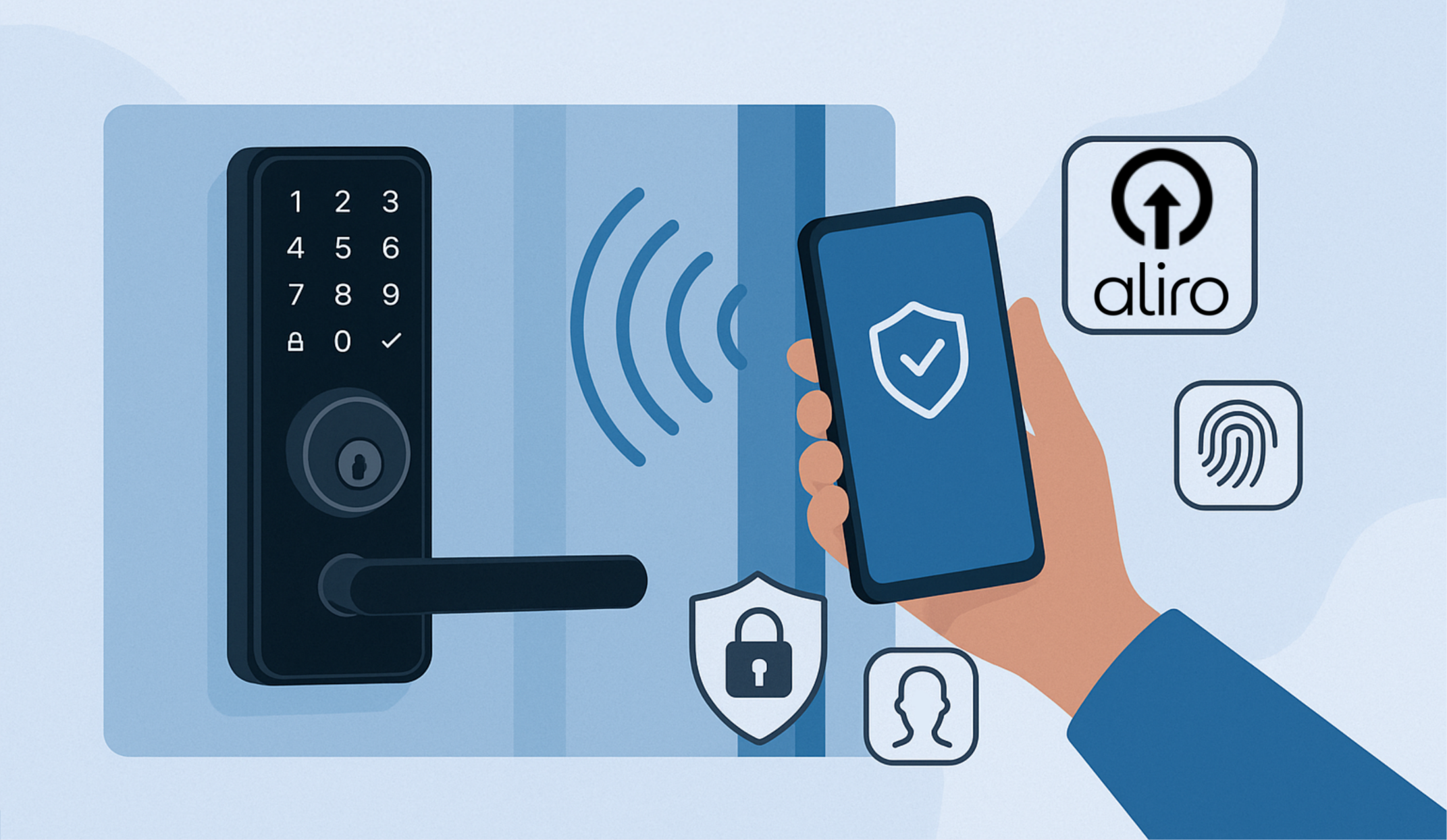

I read this blog post on smart lock design basics and i gotta say, its a good attempt at explaining bill of materials (BOM) but it lacks depth. as an engineer with exp in IoT consulting services, esp firmware development services & embedded development services, i can tell u that BOM is just 1 part of the puzzle. where’s the discussion on power consumption, security protocols & data transmission? 🤔
I think you’ve glossed over the importance of secure communication protocols in smart lock design.
I thoroughly enjoyed your informative blog post on smart lock design basics! However, I couldn’t help but notice that you glossed over the importance of firmware development services in the context of Matter-over-Thread protocol integration. A more detailed explanation of how firmware updates can impact device security and interoperability would have been a valuable addition to your piece. Nevertheless, well done on highlighting the benefits of this emerging trend!
Kudos to you on an engaging piece that’s really “bolstering” innovation in the IoT space! I’m impressed by your comprehensive coverage of Matter protocol and its impact on smart lock development. Your insights will surely help entrepreneurs seeking top-notch firmware development services. Great work!
Meh, wireless comms module is fine i guess, but firmware development services for these things is where it’s at, make or break, not just about BLE and Wi-Fi.